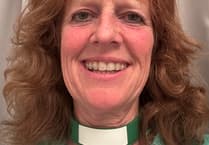-(1).jpeg?trim=0,0,0,0&width=752&height=500&crop=752:500)
I've noticed many more jackdaws in recent years in my area, Goldsworth Park, and have become accustomed to hearing the loud “kyak” call.
When the cherries ripened on our large cherry tree this year, a flock of jackdaws descended one morning and had scoffed the lot before midday. Until this year, the tree was cleared by blackbirds, magpies and wood pigeons over a period of days, never in a single morning!
However, I asked other nature lovers living in different parts of Woking and they hadn’t noticed an increase in jackdaws.
Large groups roost in trees in Goldsworth Park; it was a sight to behold when they returned to their roosts in the evenings. I suspect these birds are the basis for my own perception that the jackdaw population is increasing in my immediate vicinity, possibly supplanting other corvids – starlings and crows.
I contacted the British Trust for Ornithology (BTO) for their views. Jon Carter of the BTO explained that its Breeding Bird Survey (BBS) data has revealed there has been a long-term increase in the jackdaw population in Surrey – up 72 per cent since 1995 – in line with increases in SE England (74 per cent) and England (78 per cent).
Jon said: “Jackdaws have been on the increase long before that: there was a 143 per cent increase in England from 1966.
“There's no evidence from the BBS of any particular short-term increase – the five-year trend in all of these areas shows no change.”
Jon added that the 2025 BBS data is still being collected. However, in Surrey there is no evidence from BBS of 2024 being a “good year”.
He said: “With jackdaw numbers being boosted in winter by other birds from Northern Europe, it is possible that our wintering numbers are going up – and if that increase in winter is real, that might drive an increase in the breeding season.
“There's no regional evidence of crows being supplanted – they've been stable for over 10 years – if anything there has been a slight increase over the longer term. We know starlings have declined, but I don't think there’s any evidence that jackdaws are a factor.
“Jackdaws do of course like to nest in chimney pots. One factor behind the long-term increase might be the greater availability of chimneys as many cease to be used!”
However, as none of the homes around me were built with chimney pots this can’t be a factor in my locality.
The jackdaw is unmistakeable, a small crow described very well by the BTO as “a smart looking bird with black plumage, and a contrasting light grey nape. The eye is a piercing silver yellow in adults, but a stunning blue in young birds.”
It is often seen searching on the ground for food whether singly, in pairs or as part of large groups. They are sociable and can be seen in flocks.
They breed from early April to mid-May and are monogamous, forming long-term pair bonds that usually last for life. Known for nesting in chimneys, they nest in cavities wherever they can find them: any man-made structure – even large nest boxes – as well as in burrows, tree holes and crevices on cliffs.
Pairs nest in loose colonies and once a colony is established all members cooperate to defend it from predators.
For information on the work of the BTO and ways to get involved visit www.bto.org
.jpeg?trim=45,0,115,0&width=752&height=500&crop=752:500)




Comments
This article has no comments yet. Be the first to leave a comment.